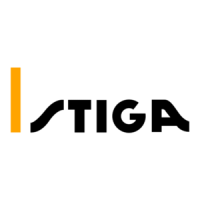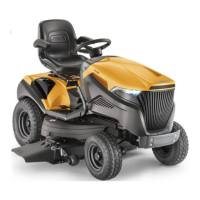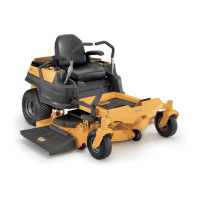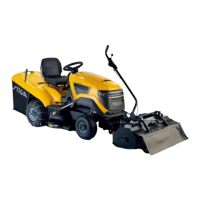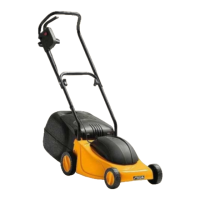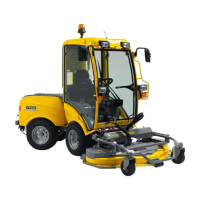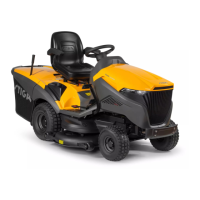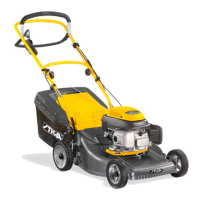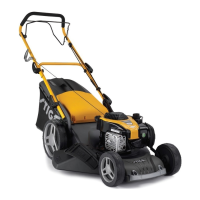EN - 21
• make sure that all moving parts
have come to a complete stop;
• read the relevant instructions;
• use suitable clothing, protective
gloves and goggles
•
7.2 REFUELLING / EMPTYING
THE FUEL TANK
IMPORTANT Observe the precautions
provided in the engine owner's manual.
Consult the engine owner's manual
for the type of fuel to be used.
7.2.1 Refuelling
1.
2.
3. Refuel being careful not to
4.
5.
IMPORTANT Do not drip petrol onto the
plastic parts to avoid ruining them. In the
event of accidental leaks, rinse immediately
with water. The warranty does not cover for
damage to plastic parts of the bodywork
or the engine caused by petrol.
7.2.2 Emptying the fuel tank
NOTE Fuel is perishable and should
not remain in the tank for more than 30
days. Empty the fuel tank before storing the
machine for long periods of time (chap. 9).
Allow the engine to cool
before emptying the fuel tank.
1.
surface, in the open air.
2. Place a suitable container under
3.
4. Open the fuel tap (if provided)
5. Collect the fuel in a suitable container.
6.
7. Close the fuel tap (if provided).
The next time the machine is used,
check that there are no fuel leaks from
the tubes, fuel stopcock or carburettor.
7.3 CHECK, TOP UP, DRAINING
OF ENGINE OIL
IMPORTANT Observe the precautions
provided in the engine owner's manual.
Consult the engine owner's manual
for the type of oil to be used.
7.3.1 Check/top-up
Always check the oil level before use.
•
•
Do not overfill as this could cause
the engine to overheat. If the oil level
exceeds the “MAX” mark, drain until
the correct level is achieved.
7.3.2 Draining
oil at regular intervals, as indicated in the
The oil may be very hot if removed
just after the engine has been switched
off. Consequently allow the engine to
cool down for a few minutes before
proceeding to drain off the oil.
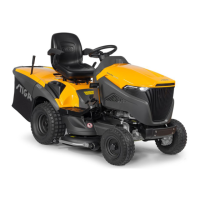
